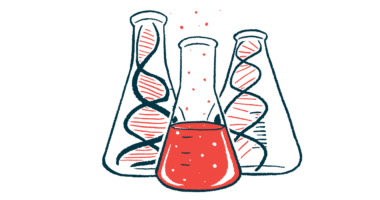Low-dose Leflunomide Effective Induction Therapy for Lupus Nephritis, Phase 2/3 Trial Finds

A low dose of the immunosuppressant leflunomide is as safe and effective as the standard of care cyclophosphamide for induction treatment of patients with lupus nephritis, according to a Phase 2/3 trial in China.
Trial findings were published in the study, “Leflunomide versus cyclophosphamide in the induction treatment of proliferative lupus nephritis in Chinese patients: a randomized trial,” in the journal Clinical Rheumatology.
Lupus nephritis is a type of kidney inflammation and the most frequent organ-specific complication in systemic lupus erythematosus (SLE) patients.
Cyclophosphamide, an immunosuppressant given in combination with glucocorticoids, had been the standard choice for induction treatment of lupus nephritis, but recent evidence that CellCept (mycophenolate mofetil) was as effective as cyclophosphamide led to CellCept being recommended as a first-line therapy for these patients.
Research in Asian patients, however, showed that CellCept was associated with significantly more treatment discontinuation and deaths than cyclophosphamide.
Leflunomide (marketed under the brand name Arava, among others), an anti-inflammatory agent that decreases T- and B-cells, was originally used in the treatment of rheumatoid arthritis, but studies suggest it is safe and may be effective for SLE patients, including as a first-line therapy for lupus nephritis.
A review of 11 clinical trials also concluded that leflunomide was safer and superior to cyclophosphamide in achieving complete and total remission, but no difference was found in SLE disease activity index (SLEDAI) scores.
While low-dose leflunomide has been evaluated in studies of rheumatoid arthritis, there is less evidence of the effectiveness of this regimen in lupus nephritis. To address this, researchers conducted a multicenter Phase 2/3 trial to compare the safety and efficacy of 24 weeks of low-dose leflunomide with that of cyclophosphamide in the first-line treatment of lupus nephritis patients in China.
The study included 100 patients, between 21 and 61 years old, with proliferative lupus nephritis, randomly assigned to either leflunomide or cyclophosphamide treatment, combined with prednisone.
While leflunomide was given orally at a loading dose of 40 mg/day for three days followed by 20 mg/day for 24 weeks, cyclophosphamide was delivered monthly via intravenous infusion at a dosage of 0.8-1 grams.
Prednisone was administered daily at a dose of 0.8-1 mg per kilogram of total weight for eight weeks, which was decreased by 5-10 mg every two weeks until 20 mg daily and then decreased by 2.5 mg every two weeks until a maintenance dose of 10 mg per day was reached.
The study’s primary efficacy outcome was the frequency of complete remission and partial remission at 24 weeks. Complete remission was defined as urinary protein excretion of less than 0.3 g/day, with normal urinary sediment and serum albumin concentration, as well as stable renal function. Partial remission was defined as a decrease of urinary protein excretion by more than 50%, serum albumin level of 30 g/L or greater, and stable renal function.
Secondary outcomes included assessments of urinary protein excretion, serum albumin — the most abundant protein in plasma — immune protein complement 3, antibodies targeting double-stranded DNA, SLEDAI score, blood platelet count, and liver function.
The patients were followed up every two weeks in the first month and then every four weeks for the remaining 20 weeks. Initial clinical parameters were similar in the two groups. Of the participants, 90 finished the 24-week treatment period.
Results revealed no significant differences between groups in complete remission and partial remission rates, as well as in time to achieve partial remission. At week 24, 11 patients in the leflunomide group (23%) and 14 of those taking cyclophosphamide (27%) achieved complete remission. Partial remission was achieved by 56% of patients on leflunomide and 42% of participants taking cyclophosphamide.
Similar improvements in the two groups were also found in SLEDAI scores, serum albumin, complement 3, anti-dsDNA antibody level, and urinary protein.
The rate of adverse events also did not differ between the groups. Infection was the most common adverse event, with upper respiratory infection and herpes zoster occurring in both groups. One patient on leflunomide died of suicide after achieving complete remission.
“Compared with cyclophosphamide, low-dose leflunomide in combination with prednisone showed both effectiveness and safety in the induction therapy of proliferative lupus nephritis in Chinese patients,” the researchers wrote.
According to the team, study limitations included the limited number of patients, only having participants from the same race, and the lack of efficacy assessments during maintenance treatment.






